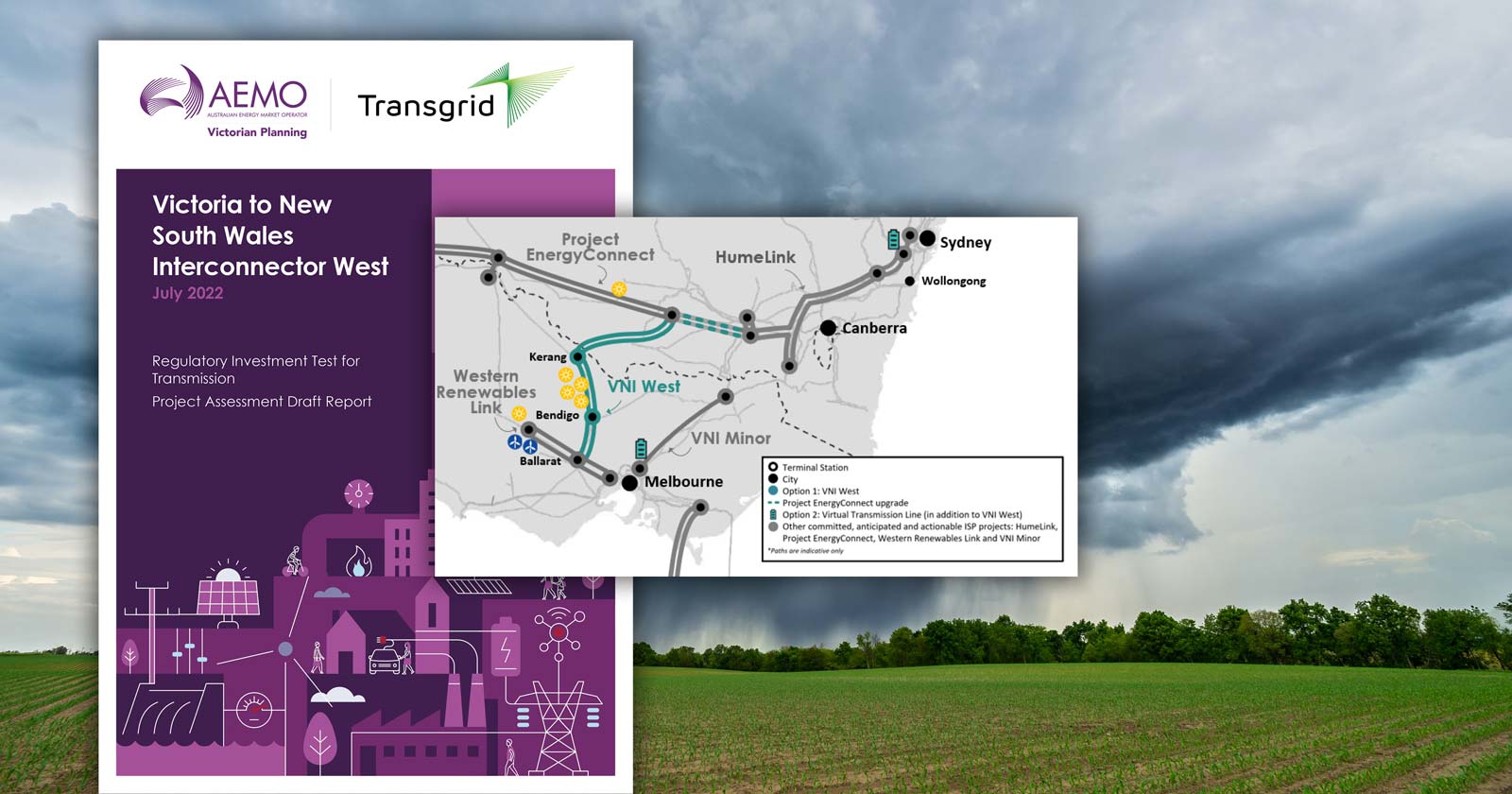Energy Grid Alliance Submission on the VNI West PADR

VNI West Project Assessment Draft Report (PADR) Consultation Submission
Energy Grid Alliance appreciate the opportunity to respond to the Victoria to New South Wales Interconnector West (VNI West) Regulatory Investment Test for Transmission (RIT–T) process Project Assessment Draft Report (PADR) consultation.
In this submission, Energy Grid Alliance has responded to matters of importance in respect to the VNI West RIT–T as well as broader policy objectives that should be considered beyond the energy system. EGA note while the RIT–T proponents (AEMO Victorian Planning (AVP) and Transgrid) do not ask for this broader policy response, it is of critical importance that a holistic view of the current and future state of the world be taken in this once-in-a-lifetime transition.
Background
Australia is on the brink of a massive energy market transformation with the construction of new wind and solar power, coupled with the potential for thousands of kilometres of new transmission lines. The creation of Renewable Energy Zones (REZs) and offshore wind zones introduces abundant opportunities for regional Australians, businesses, manufacturers, and industries to create new jobs, and profit from new technologies, demand for new materials, and new export markets. While meeting climate change objectives and future economic prosperity is important, this needs to be reasonably balanced with cumulative impacts on regional landowners and communities who will, for the most part, carry the burden of new infrastructure.
Energy Grid Alliance sees this once-in-a-lifetime transition as an opportunity to develop best practice policies and framework that better integrate land use considerations, environment, emissions, economic opportunities, and community into the planning process. Increased policy certainty is in the interests of stakeholders across all sectors of the economy and moving towards a net zero economy by 2050 will generate substantial opportunities and employment. It is critical to ensure we transition to renewables in the most orderly and strategic way that delivers the best outcomes for Australians and provides more certainty to investors, industry, business, the transitioning workforce, and local communities.
Social licence starts with credible, legitimate, and trust-worthy assessment. In this submission, Energy Grid Alliance has responded to matters that relate to this objective.
Thinking about the local community where renewable energy infrastructure is planned to be hosted and thinking about the workforce as we transition away from coal is important to build trusting relationships with industry and the public. This is something the ISP does not do and is something the VNI West PADR has not done.
EGA believe it is critical to prioritise the needs of each state to ensure costs to its people are minimised, development opportunities maximised, transitioning workforces are supported and the state Government is not carrying unnecessary burdens imposed upon it to gain minimal benefit from the NEM.
As the climate emergency worsens, there is too much at stake to adopt the current ‘decide, announce, defend’ and ISP-first model of infrastructure delivery. There is too much at stake to not consider state-level needs, roadmaps, policies, and objectives first. There is also too much at stake, with respect to social licence, to not be robust, transparent, and accurate in all cost-benefit tests.
It is critical that all Victorians play a central role in the delivery of the states future electricity system and that the needs, rights and opportunities for Victorian communities, industries and consumers are not being compromised for the benefit of the NEM.
Energy Grid Alliance support development and implementation of robust, accountable, and beneficial transmission projects and welcome opportunities for further consultation.
Key points of this submission
- The PADR has not assumed a realistic counter-factual without the Western Renewables Link
- The PADR has counted benefits but not appropriately counted costs
- The PADR has not adequately defined the options
- The PADR has not counted the cost of the North Ballarat terminal station (NBTS), 500 kV dual circuit lines from NBTS to Sydenham (SYD) or upgrading of SYD. These components are required for this project, yet costs have not been counted (at least not after 2035) in Western Victorian Regulatory Investment Test for Transmission (Western Victorian RIT–T) Project Assessment Conclusions Report (PACR) in July 2019.
- Instruments and mechanisms are required for monitoring and regulating avoided or deferred investment benefits
- Credibility, legitimacy, and trust (social licence) has been recognised but not accounted for in the ISP-first framework
- The PADR does not effectively consider state-level roadmaps, transitioning workforces, society and Victoria’s economic future

